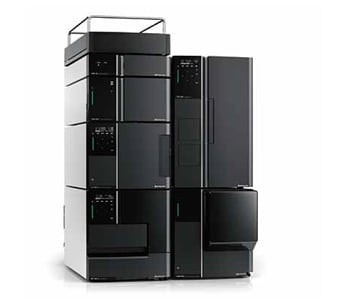
LCMS-2050
- The Shimadzu LCMS-2050 single quadrupole mass spectrometer and SPD-M30A photodiode array detector offer a straightforward workflow for quantitating oligonucleotides, streamlining the analysis process. - Confident mass confirmation can be obtained over a wide mass range of nucleotide oligomers. - The Shimadzu LCMS-2050 enables the detection and identification of lower levels of impurities commonly found in synthetic oligomers.
Oligonucleotide therapeutics have garnered increased attention in recent years as an innovative class of treatments in immunology, virology, and RNA-based therapies. It is crucial to differentiate between full-length and truncated nucleotides, as well as modified and unmodified versions for effective quality control. Traditional hybridization techniques, such as ELISA (enzyme-linked immunosorbent assay) and qPCR (polymerase chain reaction), offer sensitivity in detection, but lack specificity for effective impurity analysis. Liquid chromatography-mass spectrometry (LC-MS) is an advanced technique with inherent specificity that can be utilized to analyze impurities, degradants, and other biological/chemical modifications that cannot be analyzed by hybridization techniques. Mass spectrometry is commonly perceived as complex, often requiring specialized expertise for routine quality control applications. The Shimadzu single quadrupole LCMS-2050 is a user-friendly instrument capable of acquiring reliable and sensitive data with simplified operation. The automatic setting of the sampling rate from peak width and number of data points enables users of any experience level to generate quality data by streamlining method development. Developing a robust workflow for accurately determining intact mass and quantitation of synthetic oligomers is essential for maintaining high-quality products. The LCMS-2050, with a mass range of m/z 2-2000, is an ideal instrument to address this challenge by facilitating data acquisition over multiple charge states. Utilization of PDA (photodiode array) detection in series with MS can enhance quantitation accuracy due to the strong absorption of nucleic acids at 260nm. This application note outlines a workflow for confident mass confirmation across the entire range of nucleotide length oligomers (10-60-mer), along with quantitation of yield using both UV and mass spectrometry data. The acquired data from these workflows were analyzed considering impurities, including aborted sequences (N-1, N-2) and mobile phase adducts.
June 21, 2024 GMT
Some products may be updated to newer models